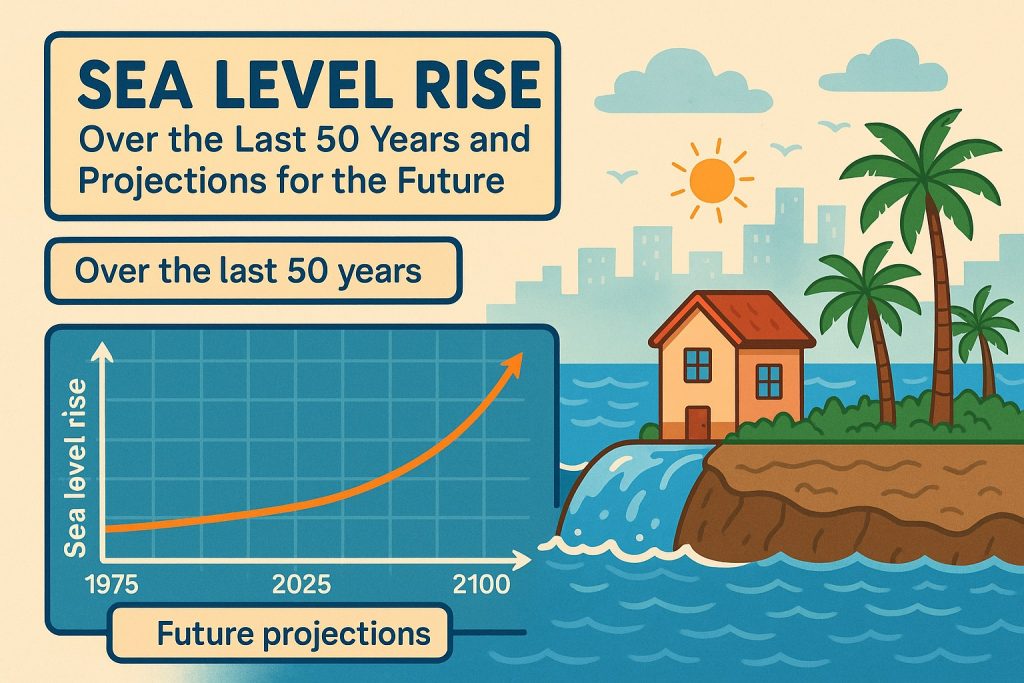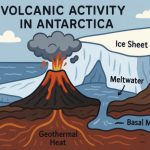The rise in global sea levels is one of the most visible and urgent consequences of climate change. Over the past 50 years, ocean levels have been steadily increasing, driven by melting glaciers, ice sheet loss, and the thermal expansion of seawater. This process poses significant threats to coastal communities, ecosystems, and infrastructure worldwide — and is expected to accelerate in the coming decades if global temperatures continue to rise.
Sea Level Trends Since the 1970s
According to data from NASA, NOAA, and the IPCC:
- Global sea levels have risen by approximately 10–15 centimeters (4–6 inches) since 1975.
- The rate of rise has doubled in the past two decades compared to the 20th century average.
- The primary contributors are:
- Thermal expansion: As oceans warm, water molecules expand.
- Melting of glaciers and ice caps, especially in Greenland and Antarctica.
- Loss of Arctic sea ice indirectly affects climate feedback loops.
Satellites such as TOPEX/Poseidon and Jason-series have allowed scientists to measure sea level changes with unprecedented accuracy since the 1990s.
Impacts Already Being Observed
Rising sea levels are already affecting both human and natural systems:
- Coastal erosion is becoming more frequent and severe.
- Flooding events, especially during high tides or storms, are more common in cities like Miami, Jakarta, and Venice.
- Saltwater intrusion is affecting freshwater aquifers and agricultural lands.
- Coral reefs and mangroves are under stress from changing sea levels and temperatures.
Low-lying island nations such as the Maldives, Tuvalu, and Kiribati are facing existential threats, with some communities already being relocated.
Projections for the 21st Century
Future sea level rise depends on greenhouse gas emissions and global climate policy:
- Moderate scenario (RCP4.5): Sea levels could rise 30–60 cm by 2100.
- High-emission scenario (RCP8.5): Sea levels could rise up to 1 meter or more.
- Some worst-case models project over 2 meters by 2100 if major Antarctic ice sheets collapse.
Even small increases can lead to exponentially greater flooding risks, especially when combined with stronger storms and higher tides.
What Can Be Done
Adaptation and mitigation efforts are crucial:
- Coastal defenses like sea walls, levees, and raised infrastructure;
- Restoration of wetlands and mangroves to buffer storm surges;
- Urban planning and relocation for high-risk zones;
- Global carbon reduction, including clean energy transitions, is essential to slow the rise.
International cooperation is vital, especially through agreements like the Paris Climate Accord.
Glossary
- Thermal expansion: The increase in water volume as it warms.
- Greenhouse gas emissions: Gases like CO₂ and methane that trap heat in the atmosphere.
- IPCC: Intergovernmental Panel on Climate Change, a global body for climate science.
- RCP (Representative Concentration Pathway): A scenario that predicts climate outcomes based on emissions.
- Saltwater intrusion: When ocean water contaminates freshwater supplies.


